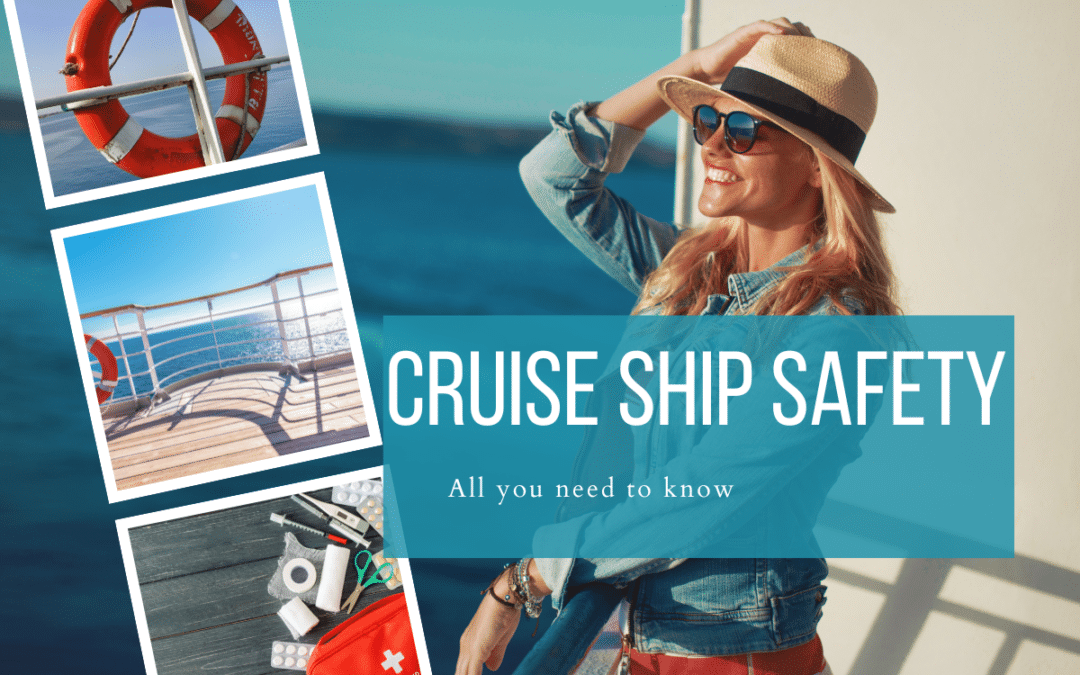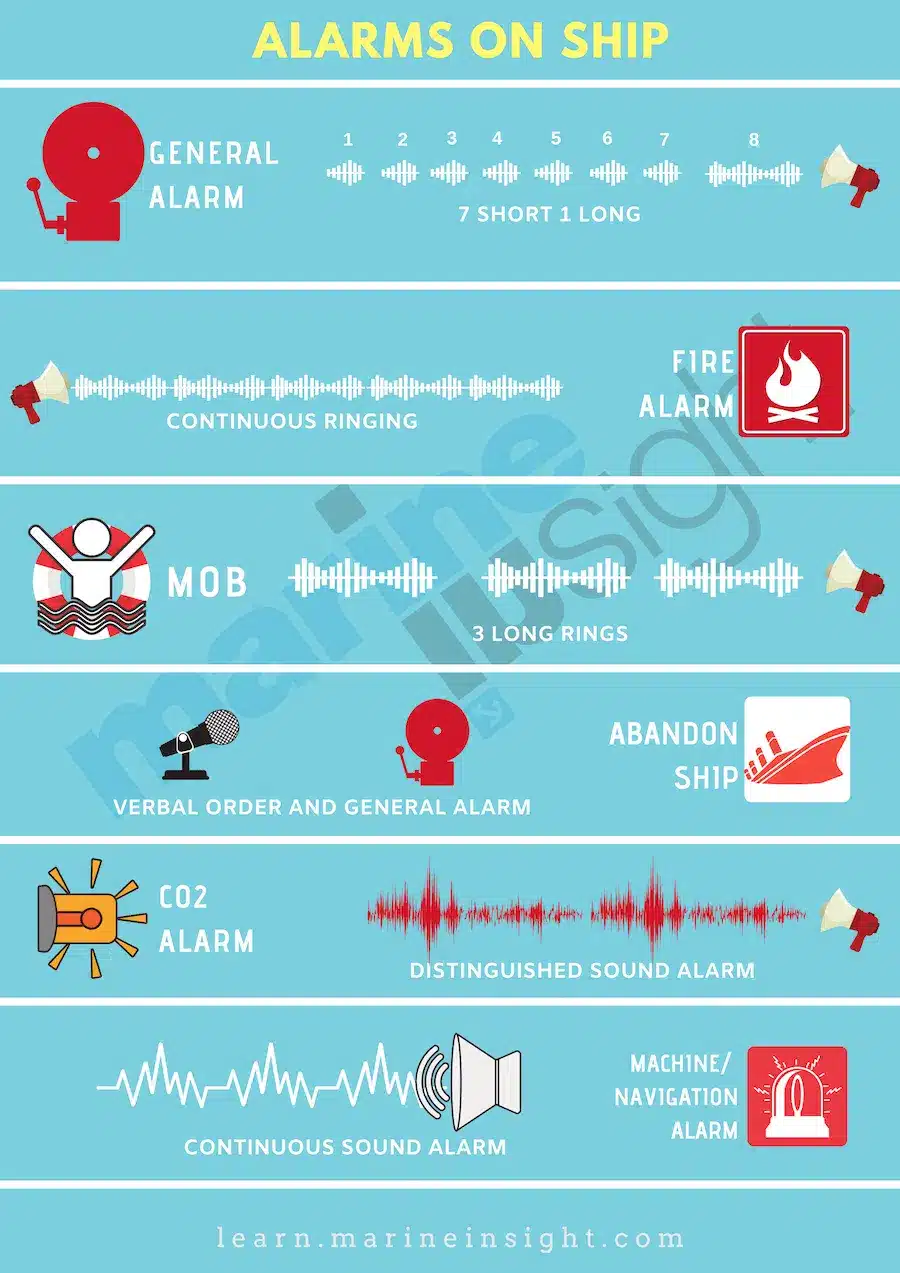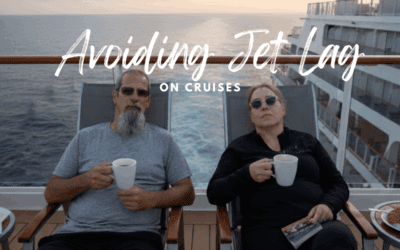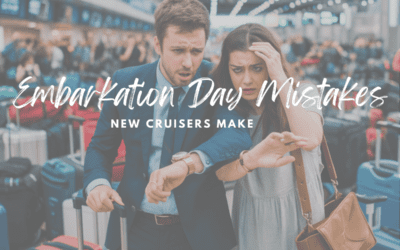Cruise safety is important for everyone, from the youngest passenger to the most experienced traveler. In this post, we will cover everything you need to know about cruise safety, from preventing falling overboard to staying safe in the pool.
Mandatory safety drill done for cruise safety
A muster drill is a mandatory safety drill that is conducted by the crew of a cruise ship before the ship sets sail. It is important for all passengers to attend the muster drill so that they know what to do in the event of an emergency.
On Carnival, they are using the E-Muster process. As soon as you board, before you head to your stateroom, be sure to check in at your Muster station. You will be given a brief demonstration of how to use your lifejacket and other safety points. Every cruise passenger try to ignore the announcements and all food and drink service including the Lido Buffet and Guy’s Burgers is closed down. E-Muster is so much nicher than the old way where everyone lined up at their assembly stations in the head and weather at once! Do yourself a favor and go right away and get this taken care of!
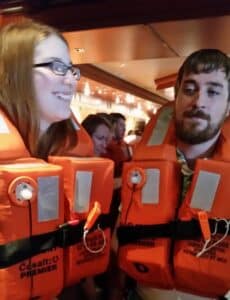
Cruise ship safety begins with the muster drill
What happens during the safety drill
- You go to the actual location of their muster station, which is the area where they will gather in the event of an emergency.
- ( Emergency preparedness)
- How to properly put on a life jacket.
- The evacuation procedures for the ship.
It is important to pay attention during the muster drill and to ask questions if you do not understand something. The crew will be happy to answer your safety questions.
You will be prepared in case of emergency
During the muster drill, you will learn about the different sounds and bells that the crew will use to communicate in an emergency.
These sounds and bells may vary from ship to ship, but they will typically include the following:
It is important to pay attention to these sounds and bells so that you know what to do in an emergency. The crew will also explain the meaning of these sounds and bells during the muster drill.
During your voyage stay aware
- Keep your ears open at all times.
- Do not ignore any sounds or bells, even if you are not sure what they mean.
- If you hear a sound or bell that you do not recognize, ask a crew member for help.
- If instructed to abandon the ship, go immediately to your room and grab your life vests.
- Wear warm clothing, and bring your passport/identification, any prescription medications, and your cruise card room key.
Vist Marine in sight to learn more about ship alarms.
Here’s a drill on Radiance of the seas that you can hear what the abandon shill call sounds like. This video show that your cruise ship safety is very important to the crew.
Video: Radiance of the Seas Abandon Ship
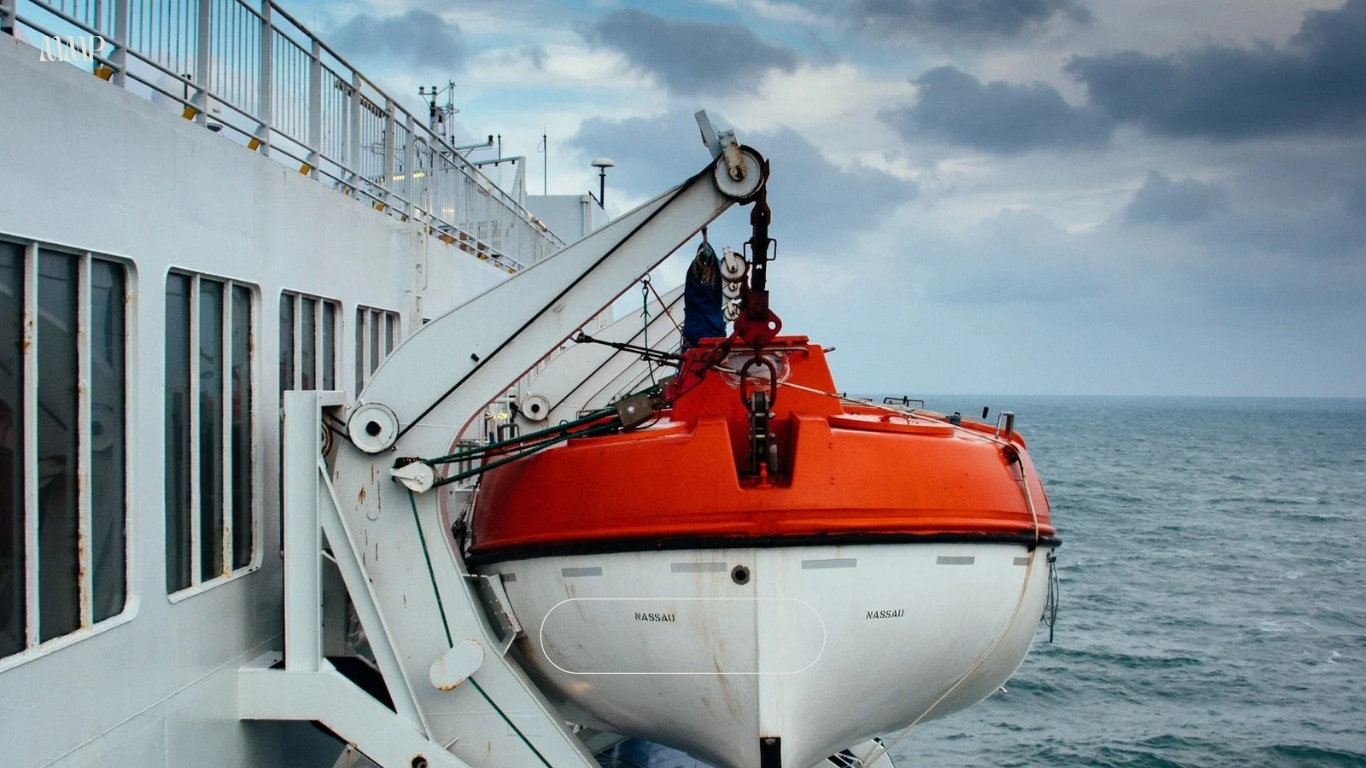
Lifeboats & Life Rafts: your cruise safety transportation
Lifeboats and life rafts are the primary means of escape from a cruise ship in the event of an emergency.
It is important to know where the lifeboats and life rafts are located on your ship.
Your life boat assembly station, or muster location will be listed on your cruise card.
This information will also be listed in the back of your stateroom door along with the evacuation route.
Make cruise safety a game for the entire family
During your cruise when you have a few minutes, try and locate your assembly station. If you don’t remember the location, it is written on your cruise card.
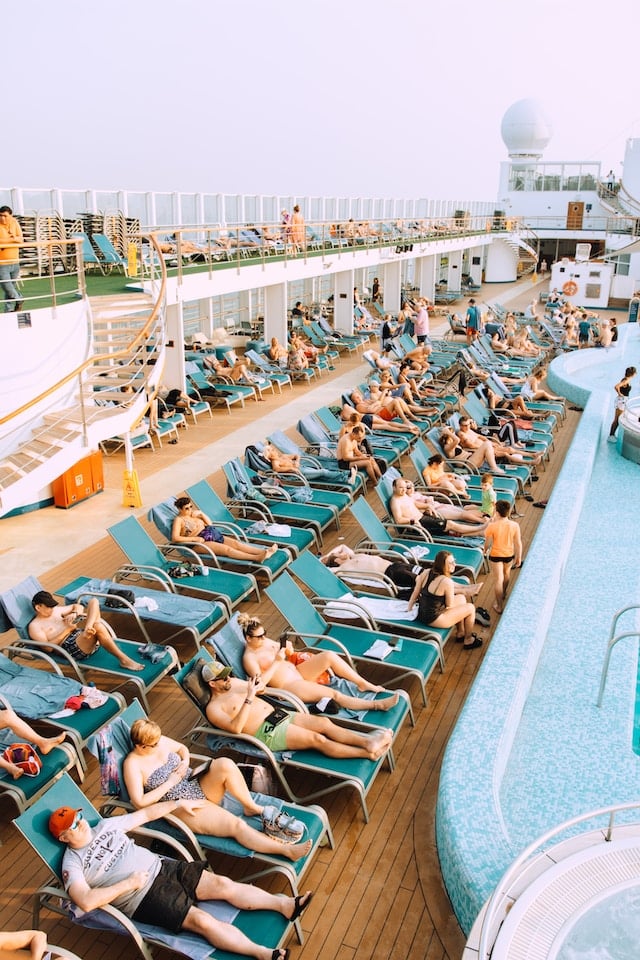
Staying safe on deck
The deck of a cruise ship can be a dangerous place.
There are many hazards, such as slippery surfaces, railings, and uneven or raised doorways.
It is important to be aware of your surroundings and to take precautions to stay safe.
For example, you should wear shoes with good traction on the deck, and you should avoid walking near railings or machinery.
Never run on the deck as it may be slippery. If you need to run, go to the running track.
.
Alcohol effects everyone’s cruise safety
Alcohol is a major contributing factor to personal safety incidents on cruises.
It is important to drink alcohol responsibly and to be aware of your limits.
Tips for drinking alcohol safely on a cruise:
Set a limit for yourself and stick to it. Don’t try to keep up with others or drink more than you can handle.
Pace yourself. Drink one alcoholic beverage per hour, and alternate alcoholic drinks with non-alcoholic drinks.
Eat before you drink. Food will help to slow the absorption of alcohol into your bloodstream.
Don’t drink on an empty stomach.This will make you more likely to get drunk quickly.
Know your limits. If you are not sure how much alcohol you can handle, err on the side of caution and drink less.
Be aware of your surroundings. Don’t drink to the point where you are not aware of your surroundings or your actions.
Don’t accept drinks from strangers. You don’t know what they have put in them.
Be prepared to call for help if you need it. The crew is there to help you, so don’t be afraid to ask for help if you are feeling overwhelmed or unsafe.
Cruise safety For guests with Drink Packages
It is also important to be aware that even if you have a drink package, you can still be cut off from alcohol if you are drinking too much.
The crew is responsible for the safety of all passengers, and they will not hesitate to cut you off if they believe you are at risk.
Alcohol Trivia -Did you know:
- Alcohol can dehydrate you, so it is important to drink plenty of water throughout the day.
- Alcohol can impair your judgment and make you more likely to take risks, so it is important to be aware of your actions and surroundings.
- Alcohol can make you more susceptible to seasickness, so it is important to drink in moderation if you are prone to seasickness.
- Alcohol can interact with certain medications, so it is important to talk to your doctor about any medications you are taking before you start drinking on your cruise.

Cruise Stateroom Safety
All cruise staterooms should be equipped with essential safety features like smoke detectors, fire alarms, and fire sprinklers. Remember, never hang anything from the sprinklers as it could impair their effectiveness.
When you first get to your cruise cabin, look for your life jackets. Make sure the correct number and correct size are there. Life jackets can be found in a labeled closet, cabinet, or under the bed. If traveling with infants or small children, check with you stateroom attendant for the correct size. The evacuation route along with your Assembly Station will be listed on the door.
Security First:
For peace of mind, use the peephole before opening your door, and always lock it when leaving the room, napping, or using the bathroom. This ensures your privacy and security while enjoying your time onboard.
Balcony & Privacy:
If you have a balcony, keep curtains closed when changing or undressed. Remember, workers like cleaners, painters, or maintenance personnel might be working on the deck outside your balcony at scheduled times.
Sofa Bed Safety for Everyone:
- Age Matters: Ensure anyone sleeping on the pull-out couch is old enough not to fall off.
- Ask for Support: Check with your cabin steward for available bed rails. If not, create a barrier using rolled-up towels or blankets under the cushion.
- Clear the Path: Remove any trip hazards from the floor near the couch bed.
- Full Extension, Please: Double-check the couch bed is fully extended before anyone settles in.
- Traveling with Tiny Travelers? Consider bringing your own bed rails or an inflatable bed for added comfort and safety.
Bonus cruise safety Tips for Sofa Bed Sleepers:
- Head First is Not Best: Avoid sleeping with your head near the edge of the couch bed.
- Tiny Sleepers in the Center: If traveling with a baby or toddler, place them in the center of the bed, surrounded by pillows, for extra protection.
- Regular Inspections: Keep an eye on the couch bed’s condition, checking for tears or rips in the fabric.
Pullman Bed Safety
- Ground Up First: Never climb onto the bunk beds before they’re fully set up and secured.
- Mattress Matters: Ensure all mattresses are properly locked in place to prevent shifting.
- Top Bunk Access: Only allow responsible children who are old enough to safely use the top bunk.
- Shining a Light: Pack a small flashlight or battery-operated tap light for easier navigation when climbing down at night.
By following these stateroom safety tips and guidelines, you can enjoy your cruise ship stateroom comfortably and confidently, maximizing fun while prioritizing your well-being.
Are you wondering if balconies are safe for children, check out this video. Video: Are Cruise Balconies Safe?
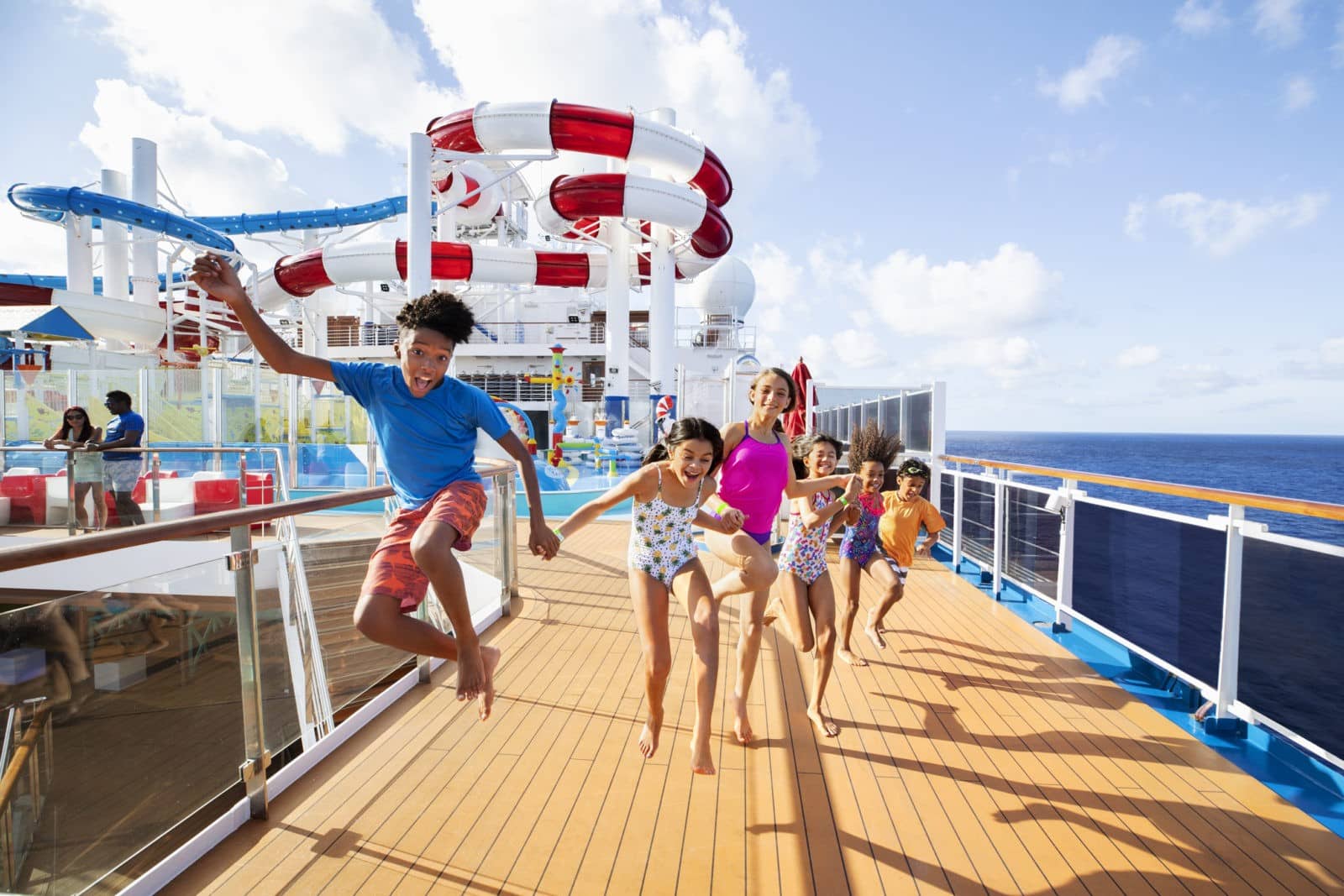
Cruise Safety for the youngest cruisers
- All children under 12 must wear a green wristband throughout the cruise. This wristband indicates their muster station location. If a child is in the kids’ club, they will be taken to their muster station by a member of the kids’ program staff and reunited with their parents there.
- Young children should not be left unattended onboard. Make sure you know where your children are at all times and when they will return.
- Do not allow strangers of any age into your stateroom when you are not present. Just like on land, there are people you don’t want your children to ever meet.
Additional tips for keeping your kids safe on a cruise:
- Talk to your kids about safety before the cruise. Explain the importance of staying with you and not talking to strangers.
- Teach your kids how to swim and how to use a life jacket.
- Make sure your kids know the emergency procedures for the ship, including where to go in the event of a fire or other emergency.
- Be aware of your surroundings at all times.
- Watch for hazards, such as open stairs,slippery decks, and raised doorways.
- Use the buddy system.
- Have your kids stick together when they are playing or exploring.
- Teach your kids that if they feel unsafe to go to any ship employees for help.
By following these tips, you can help keep your kids safe and have a fun and memorable cruise vacation.
Video: Fifty best cruising with kids tips
Cruise Safety at the Pool & Waterslides
Cruise ships typically have a variety of pools and water slides, which can be a lot of fun for passengers of all ages.
However, it is important to be aware of the safety risks associated with these amenities.
Here are some tips for staying safe in the pool:
- Always swim with a buddy.
- Do not swim if you are feeling sick or tired.
- Be aware of your surroundings and watch out for other swimmers.
- Do not run or horseplay in the pool.
- Do not dive into shallow water.
- Use the stairs to enter and exit the pool.
water slides safety for all ages
- Follow the instructions posted at the top of the slide.
- Do not go down the slide if you are feeling sick or tired.
- Be aware of your surroundings and watch out for other riders.
- Do not wear loose clothing or jewelry on the slide.
- Do not try to double up on the slides.
General cruise safety tips for children:
- Children under the age of 12 should always be supervised in the pool.
- Children should not be allowed to use water slides without adult supervision.
- Make sure that children wear life jackets when in the pool or near water.
More pool and water slide safety on cruise ships:
- Some cruise ships have a weight limit for water slides.
- Some water slides may be closed for maintenance or repairs.
- There may be a lifeguard on duty at the pool, but it is important to always supervise your children.
- If you see someone in trouble in the pool or on a water slide, immediately notify a lifeguard.
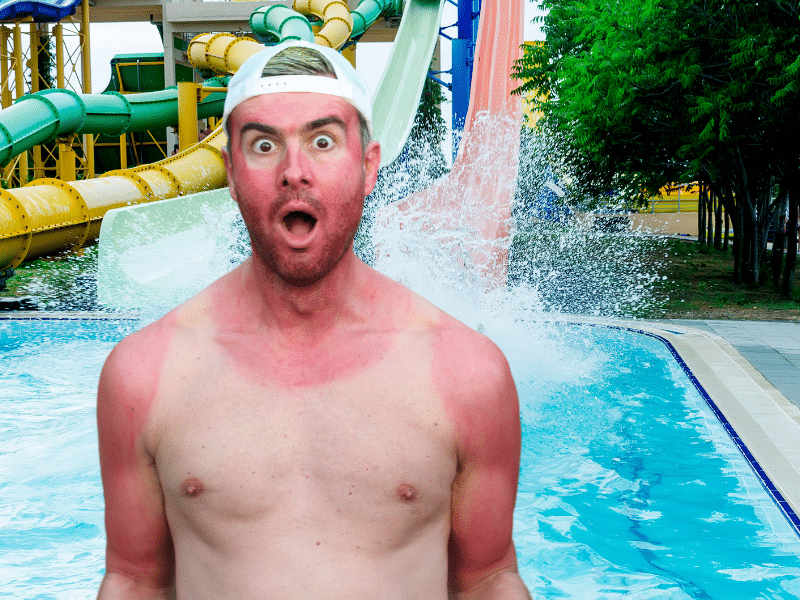
Cruise Safety Sun Caution
The sun’s rays can be very strong, even on a cloudy day. It is important to take precautions to protect yourself from sunburn, especially if you are fair-skinned or have sensitive skin.
sun safety cruise tips
- Wear sunscreen with an SPF of 30 or higher and reapply it every two hours, or more often if you are sweating or swimming.
- Wear a hat and sunglasses to protect your face and eyes.
- Stay in the shade during the hottest part of the day, which is usually between 10 am and 4 pm.
- Drink plenty of fluids to stay hydrated.
- Take breaks from the sun to cool down.
Additional tips for preventing sunburn on a cruise ship:
- Choose a cabin with a balcony or window so that you can enjoy the sun without being exposed to its direct rays.
- If you are going to be spending a lot of time on the pool deck, consider renting a cabana or umbrella.
- Be aware of the windchill factor. Even if it is not hot outside, the wind can still dry out your skin and make you more susceptible to sunburn.
Hot Decks
The decks of cruise ships can get very hot, especially in the sun. It is important to be aware of the risk of heatstroke and take precautions to stay cool.
Tips on staying cool on a cruise ship:
- Drink plenty of fluids, especially water.
- Avoid alcohol and caffeine, which can dehydrate you.
- Wear loose-fitting, light-colored clothing.
- Stay in the shade during the hottest part of the day.
- Take breaks from the sun to cool down.
- If you start to feel faint or dizzy, move to a cooler location and drink some water.
Don’t forget your feet
Wear shoes to protect your feet from the hot decks.
The decks of cruise ships can get very hot, especially in the sun. It is important to wear shoes to protect your feet from getting burned.
- Choose shoes that are made of a material that will insulate your feet from the heat, such as leather or canvas.
- Avoid wearing sandals or flip-flops, as they offer little protection from the heat.
- If you are going to be spending a lot of time on the pool deck, consider wearing water shoes.
By wearing shoes, you can help to prevent your feet from getting burned and enjoy your cruise safely.
Balcony Cruise Safety
It is very uncommon for people to fall overboard on a cruise, but it is important to take extra care with children, especially near railings and balconies.
- All cruise ships are required to have railings that are at least 42 inches high on all open decks and balconies. Carnival railings are at least 46″.
- However, children are unpredictable and may not always be aware of the dangers of falling overboard. It is important to always supervise children near railings and balconies, and never leave them unattended.
- Here are some specific tips for keeping children safe near railings and balconies:
- Keep the balcony door closed and locked when supervision is not available.
- Teach children to stay away from railings and balconies, and never to climb on them.
- Explain to children the dangers of falling overboard, and what to do if they see someone fall.
- Be especially vigilant when children are tired, excited, or unsupervised.
- Consider booking an OceanView or inside stateroom.
Here are some other things that can increase the risk of falling overboard:
- Alcohol consumption: Alcohol can impair judgment and coordination, which could make it more likely that someone falls overboard.
- Climbing on furniture or railings: It is important to stay behind the railings at all times and avoid climbing on furniture.
- Horseplay: Horseplay and other reckless behavior could increase the risk of falling overboard.
- Medical conditions: Some medical conditions, such as dizziness or seizures, could increase the risk of falling overboard.
Cruise safety check list
✅ Attend the muster drill and listen carefully to the instructions.
✅ Know where your muster station and lifeboats are located.
✅ Be aware of your surroundings, especially on wet or slippery surfaces.
✅ Drink alcohol responsibly and never drink and cruise.
✅ Keep an eye on your children at all times and do not allow them to talk to strangers.
✅ Swim safely and always wear a life jacket when in the water.
✅ Be aware of the ship’s emergency procedures and know what to do in the event of a fire, medical emergency, or other disaster.
✅ Report any safety concerns to the crew immediately.
Add these cruise safety tips to your checklist:
- Pack an emergency first-aid kit for your stateroom.
- Bring motion sickness medication if you are prone to seasickness.
- Wear sunscreen and a hat when you are outside.
- Stay hydrated by drinking plenty of water.
- Take breaks from the sun and heat.
- Be aware of the local customs and laws.
- Respect the environment.
Cruise Safety Conclusion
Cruising can be a safe and enjoyable vacation, but it is important to be aware of the safety risks and to take precautions to stay safe. By following the tips in this blog post, you can help to ensure that your cruise is a safe and enjoyable experience.
Additional steps you can do to stay safe on your cruise:
- Read the cruise line’s safety procedures carefully and ask questions if you have any concerns.
- Be aware of your surroundings at all times and report any safety hazards to the crew.
- Trust your instincts and do not hesitate to ask for help if you feel unsafe.
- Stay informed about the latest safety news and updates.
- Take advantage of the safety features that are available on the ship, such as life jackets, lifeboats, and fire extinguishers.
By taking these precautions, you can help to ensure a safe and enjoyable cruise vacation for everyone.
Cruise Safety FAQs:
1. What is the muster drill?
The muster drill is a safety drill that is conducted by the crew before the ship sets sail. It is required for all passengers to attend this drill so that they know what to do in the event of an emergency. During the muster drill, you will learn about the location of your lifeboat, how to operate it, and what to do if you need to evacuate the ship. You will learn the warning sounds that will tell you to head to your muster station.
2. What should I do if I miss the muster drill?
If you miss the muster drill, you should report to your muster station as soon as possible. The crew will be able to help you get up to speed on what to do in the event of an emergency. For those passengers with special needs, there may be an alternate way to practice the muster drill.
3. Where are the lifeboats and life rafts located?
The lifeboats and life rafts are located on different parts of the ship. You will learn the location of your lifeboat during the muster drill.
4. How do I operate the lifeboats and life rafts?
The crew operates the lifeboats and life rafts during an emergency. All you need to do is show up.
5. What should I do if I need to evacuate the ship?
If you need to evacuate the ship, you should follow the instructions of the crew. They will direct you to your muster station and help you board a lifeboat or life raft.
6. How can I stay safe on deck?
There are many hazards on the deck of a cruise ship, such as slippery surfaces, railings, and machinery. You can stay safe on deck by being aware of your surroundings and taking precautions. For example, you should wear shoes with good traction on the deck, and you should avoid walking near railings or machinery.
7. How can I drink alcohol responsibly on a cruise?
If you plan to drink alcohol on a cruise, it is important to do so responsibly. This means drinking in moderation and being aware of your limits. You should also avoid drinking alcohol if you are taking medication or if you are pregnant. This includes wearing motion sickness patches.
8. How can I swim safely around a cruise ship?
The water around a cruise ship can be dangerous. There are currents, waves, and other hazards that can make it difficult to swim safely. You can stay safe by only swimming in designated areas, and by avoiding swimming alone.
9. What should I do if I see something that looks unsafe?
If you see something that looks unsafe, such as a hazard on the deck or a problem with a lifeboat, you should report it to the crew. The crew will be able to investigate the situation and take appropriate action.
10. Should I stand or lean over the ship railing?
You should never stand on or lean over the ship’s railing. If you fall, the landing will be hard and injure or kill you.
11. Where can I get more information about cruise safety?
There are many resources available for information about cruise safety. You can visit the website of the Cruise Lines International Association (www.cruising.org) or the website of the U.S. Coast Guard (www.uscg.mil).
12: What should I do if I see someone fall overboard?
If you see someone fall overboard, immediately throw a life ring over and call the ship’s emergency number. The emergency number is usually 911 or 112. The crew will be able to launch a rescue and help the person who fell overboard.
Here are some additional tips if you see someone fall overboard:
- Stay calm and call or yell for help.
- Throw a life ring or other flotation device to the person who fell overboard.
- Note the time and location of the incident.
- Describe the person who fell overboard, including their clothing and any distinguishing features.
- Stay on the scene until given other instructions.
It is important to remember that time is of the essence in these situations. The sooner the person who fell overboard is rescued, the better their chances of survival.
Cruise Safety FAQs
General Safety:
-
-
What safety drills are conducted on board, and are they mandatory? Answer: Most cruise lines conduct mandatory muster drills within 24 hours of departure. These drills familiarize you with your emergency station, lifejacket usage, and evacuation procedures. Participation is crucial for everyone’s safety.
-
What medical facilities are available on the ship, and how can I access them in case of an emergency? Answer: All cruise ships have dedicated medical centers staffed by qualified professionals. In case of an emergency, dial the ship’s emergency number or inform any crew member. Medical consultations may incur additional charges depending on your insurance and the severity of the issue.
-
What weather conditions could affect the cruise, and what procedures are in place in case of storms or emergencies? Answer: Severe weather like storms can sometimes alter itineraries or cause delays. Cruise lines closely monitor weather patterns and prioritize passenger safety. If necessary, they may change course, seek shelter, or even cancel excursions. During such situations, clear announcements and instructions will be made by the crew.
-
Are there security measures in place to prevent theft or crime on board? Answer: Cruise ships have CCTV cameras, security patrols, and controlled access to certain areas. However, it’s always wise to be vigilant and take precautions like locking your cabin door and keeping valuables in the safe. Avoid leaving expensive items unattended on decks or public areas.
-
What should I do if I lose my passport or important documents during the cruise? Answer: Report the loss immediately to the Guest Services desk. They will guide you through the necessary steps to contact your embassy or obtain replacements. It’s recommended to carry copies of essential documents for backup.
-
Personal Safety:
-
-
What are the rules and regulations regarding balcony safety, especially for children? Answer: Balconies can be tempting, but safety guidelines are crucial. Never leave young children unattended, and closely supervise them at all times. Secure balcony furniture when not in use, and never climb over railings. Always wear appropriate footwear and avoid leaning against or hanging from the rails.
-
Are there lifeguards on duty at the pools and water slides? What safety measures are in place for these areas? Answer: Most cruise ships have lifeguards stationed at pools and water slides during operating hours. However, adult supervision is always recommended, especially for children. Observe posted safety rules, wear properly fitting life jackets where required, and avoid running or diving in shallow areas.
-
Are there any health risks I should be aware of when visiting ports of call, and what vaccinations or precautions should I take? Answer: Research your itinerary and check with your doctor or local health department for recommended vaccinations or preventive measures specific to the destinations you’ll visit. Carry essential medications and be mindful of local hygiene practices.
-
What should I do if I feel seasick or unwell during the voyage? Answer: Inform the Guest Services desk or visit the medical center for advice and medication if needed. Ginger, acupressure bands, and staying hydrated can also help alleviate seasickness. Opt for calmer areas of the ship like the mid-decks and prioritize fresh air and rest.
-
How can I ensure my personal belongings are safe in my cabin? Answer: Utilize the in-room safe for valuables like jewelry, passports, and cash. Keep other belongings organized and out of sight. Lock your cabin door whenever you leave, and avoid sharing your safe code with anyone.
-
Remember: Your safety is the cruise line’s top priority. Be proactive, familiarize yourself with the ship’s layout and safety procedures, and don’t hesitate to ask crew members for assistance if needed. Have a safe and enjoyable cruise!
Carnival Cruise Safety & Security
Royal Caribbean Safety & Security
Norwegian Cruise Line Safe Sail
Find out more
For more information about cruise safety, please visit the website of the Cruise Lines International Association (www.cruising.org).
Happy cruising!
How To Minimize Jet Lag on Cruise Vacations
Why Jet Lag Hits Cruisers Hard Jet lag can put a damper on your vacation before it even begins. Unlike a land trip where you might slowly adjust, cruises often have packed schedules right...
10 Cruise Embarkation day mistakes new cruisers make
10 Cruise Embarkation day mistakes new cruisers make Embarkation day is the start of your cruising adventure—a day full of excitement, anticipation, and yes, a little bit of chaos. It’s easy to get...
Christmas gift guide for Cruise Lovers-2024
Christmas Gifts for Cruise Lovers: Under $100 If you’re shopping for a new cruiser this holiday season, this gift guide is here to help. Cruising is an adventure like no other, and the right gear...

